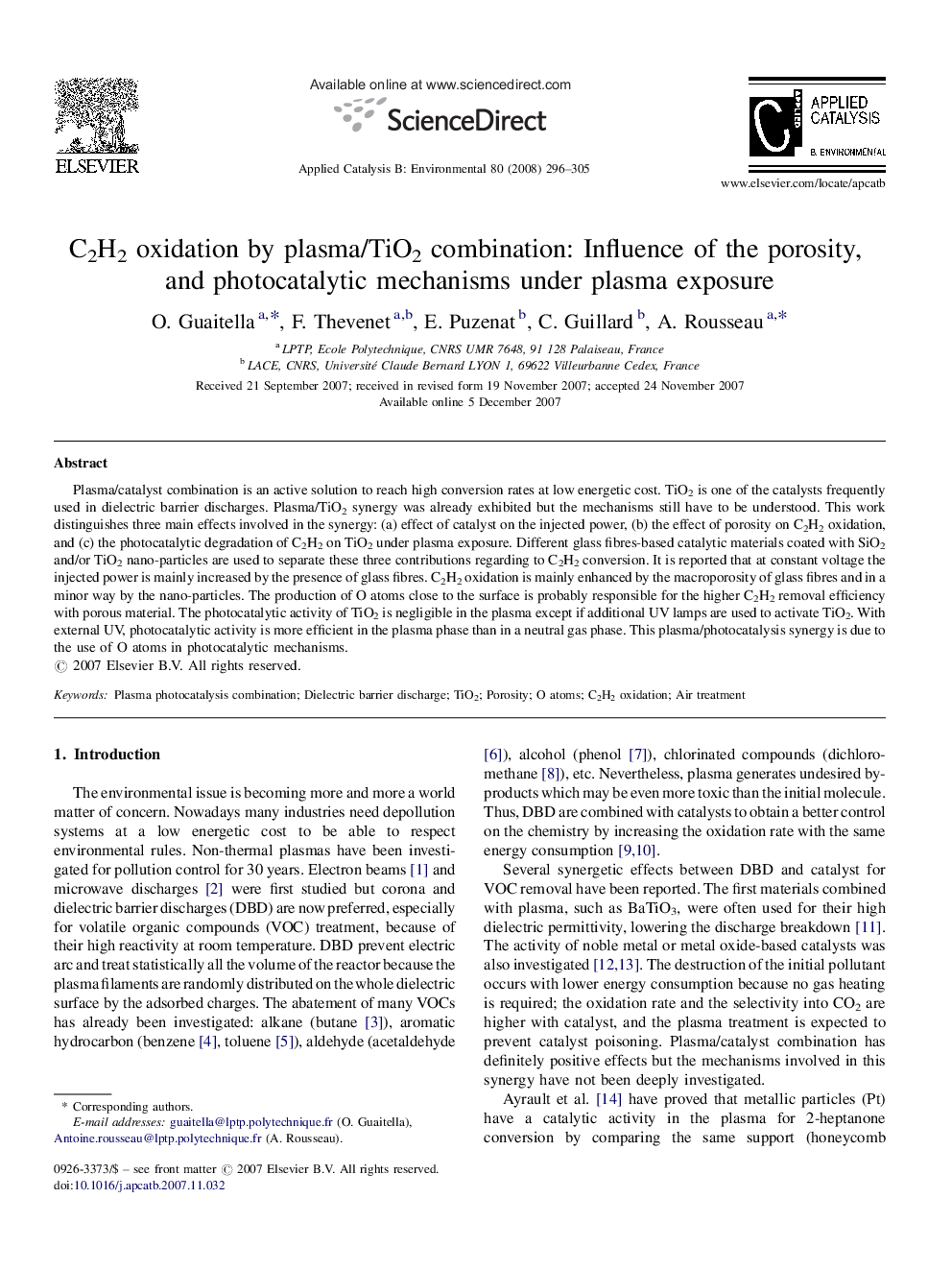| Article ID | Journal | Published Year | Pages | File Type |
|---|---|---|---|---|
| 48244 | Applied Catalysis B: Environmental | 2008 | 10 Pages |
Plasma/catalyst combination is an active solution to reach high conversion rates at low energetic cost. TiO2 is one of the catalysts frequently used in dielectric barrier discharges. Plasma/TiO2 synergy was already exhibited but the mechanisms still have to be understood. This work distinguishes three main effects involved in the synergy: (a) effect of catalyst on the injected power, (b) the effect of porosity on C2H2 oxidation, and (c) the photocatalytic degradation of C2H2 on TiO2 under plasma exposure. Different glass fibres-based catalytic materials coated with SiO2 and/or TiO2 nano-particles are used to separate these three contributions regarding to C2H2 conversion. It is reported that at constant voltage the injected power is mainly increased by the presence of glass fibres. C2H2 oxidation is mainly enhanced by the macroporosity of glass fibres and in a minor way by the nano-particles. The production of O atoms close to the surface is probably responsible for the higher C2H2 removal efficiency with porous material. The photocatalytic activity of TiO2 is negligible in the plasma except if additional UV lamps are used to activate TiO2. With external UV, photocatalytic activity is more efficient in the plasma phase than in a neutral gas phase. This plasma/photocatalysis synergy is due to the use of O atoms in photocatalytic mechanisms.
